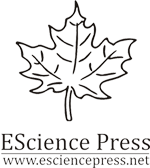Efficacy of Amblyopic Patching Therapy in Children with Down Syndrome: A Study on Refractive Errors and Visual Acuity Outcomes
DOI:
https://doi.org/10.53576/bashir.006.01.0200Keywords:
Amblyopia, Down Syndrome, Hyperopia, Keratoconus, Refractive Errors, Visual AcuityAbstract
Background: Down syndrome (DS), caused by trisomy 21, is associated with developmental delays and a high prevalence of ocular conditions, including refractive errors and amblyopia. To identify the types of refractive errors in children with Down syndrome and to assess the efficacy of amblyopic patching therapy on visual acuity outcomes. Methods: This prospective longitudinal study was conducted at the Strabismus Unit of Layton Rahmatulla Benevolent Trust (LRBT), Lahore, from September 2022 to May 2023. Thirty children with Down syndrome aged 8 to 18 years diagnosed with amblyopia were enrolled. The non-amblyopic eye was patched for four hours daily for three months. Visual acuity was assessed using the LogMAR chart, and refractive errors were determined through objective and subjective refraction. Data was analyzed using SPSS version 22.0. Descriptive statistics were used for demographic variables. Repeated Measures ANOVA was applied to compare baseline, one-month, and three-month follow-up measurements. A p-value of < 0.05 was considered statistically significant. Results: A total of thirty Down syndrome patients (mean age 14.19 ± 1.04 years; 50% male, 50% female) were enrolled. Hypermetropia was found in 66.7% (n=20) and myopia in 33.3% (n=10) of participants. Visual acuity improved significantly from a baseline mean of 0.55 ± 0.27 to 0.54 ± 0.27 at one month, and 0.41 ± 0.258 at three months (p = 0.041). Pairwise comparison showed maximum improvement at the three-month follow-up (p = 0.001). Mean glasses prescription improved from 2.13 ± 2.13 at baseline to 2.11 ± 1.40 at one month and 1.71 ± 1.32 in three months (p = 0.047), with a significant difference observed at the three-month mark (p = 0.001). These findings indicate the effectiveness of patching therapy in improving both visual acuity and refractive correction over time. Compliance was generally good across the cohort. Conclusion: Amblyopic patching therapy was effective in improving visual acuity in children with Down syndrome, with the greatest benefit observed after three months of consistent treatment.





